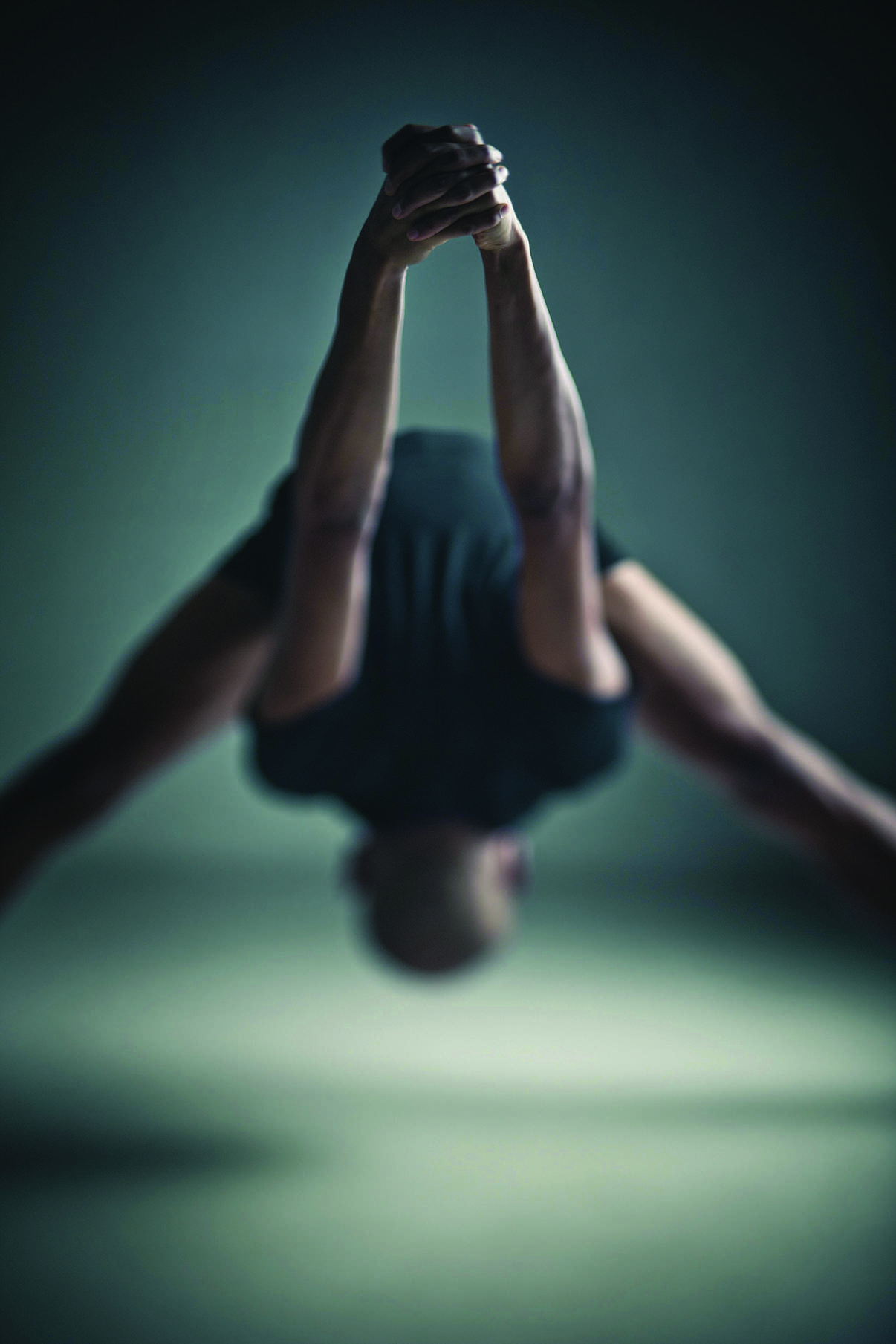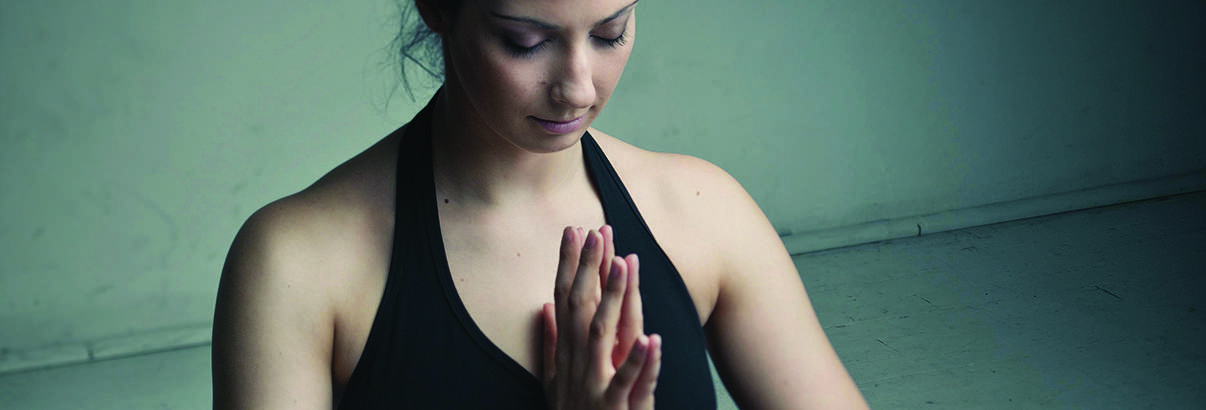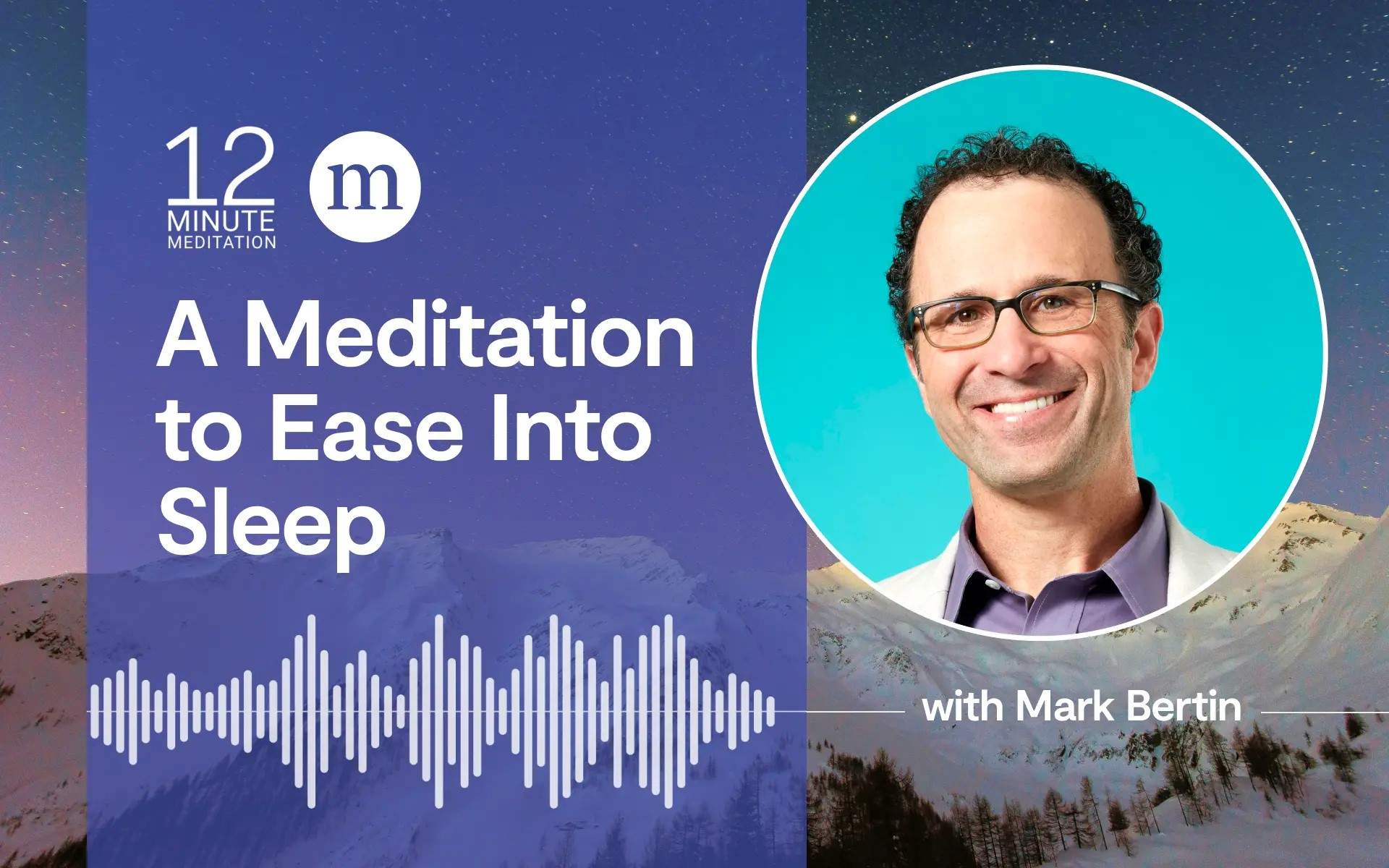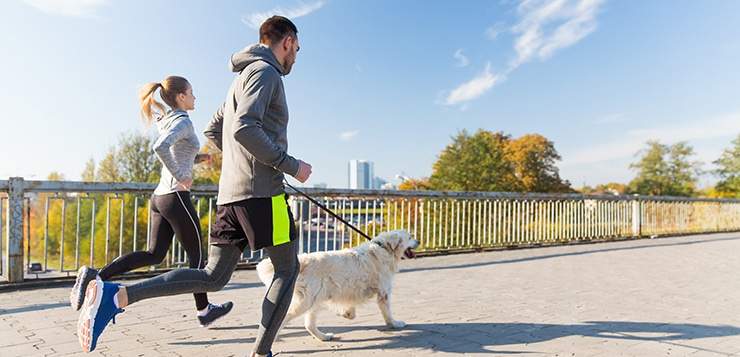There are no flashy outfits or fancy postures on display at my Tuesday morning yoga class. No handstanding selfies being posted to Instagram. Just a handful of curious students, of all shapes and ability levels, gathered around a thoughtful teacher in a tiny, backyard studio.
Our teacher guides us through a few minutes of chanting and recreation, a series of asanas (postures) and a lengthy Savasana (also called Corpse Pose or deep relaxation), before we sit for meditation. During the active part of class, we move with precision and quiet concentration. Occasionally, we discuss how the poses affect us—one woman notices that a gentle leg stretch has released tension in her hips. Another finds that a long stay in Downward-facing Dog Pose has soothed her anxiety. I discover that a simple visualization practice—imagining the exhale expanding from the base of my skull around the sides of my head toward my temples, the inhale traveling from my forehead into the center of my head—instantly quiets my mind.
The class is demanding, but not in the way of the strong and sweaty vinyasa classes I sometimes enjoy. The challenge here is to refine our awareness, to focus our minds, and to soften our hearts. Again and again our instructor asks us not to push our bodies to do more, but to quietly attune ourselves to their needs, to adapt our postures to create more ease. Our mission is to be gentle and kind to ourselves and to simply experience “being” while sitting and while moving. This invitation to become intimate with oneself, to experience a steady mind and a compassionate heart, this is the essence of yoga as I know it.
It seems odd, then, that a deeply satisfying class of this sort is not all that easy to find, even in yoga-saturated Northern California where
I live. This quietly attentive, inward-facing practice feels, in fact, like a refuge from much of the contemporary yoga scene, where workout-type classes—pulsing with music and impossibly tiny, flexible bodies wearing next to nothing—exude a subtle pressure to push harder and to achieve ever-more advanced poses. These yoga classes often feel like another venue for challenging and judging myself, setting goals, and measuring progress, rather than one in which to step away from all of the striving I already do in life so that I might see and accept myself as I am.
This quietly attentive, inward-facing practice feels, in fact, like a refuge from much of the contemporary yoga scene, where workout-type classes—pulsing with music and impossibly tiny, flexible bodies wearing next to nothing—exude a subtle pressure to push harder and to achieve ever-more advanced poses.
“The reality is that, as yoga grows as an industry and a commodity, there’s one BIG thing that is being lost: Yoga,” says New York City-based yoga teacher Alanna Kaivalya, founder of the Kaivalya Yoga Method. “The actual state of yoga, which is union and manifests as self-confidence, independence, and self-empowerment.”
I met Kaivalya a few years back when she was a rising star on the traveling-yoga-teacher circuit and I was editor-in-chief of Yoga Journal, a media company dedicated to all things yoga. Today, she is finishing a Ph.D. in mythological studies and “trying to stir things up,” she says, with social media posts asserting, cheekily, that “yoga is broken—let’s fix it” and suggesting that modern-day yogis would be better off demonstrating the beauty of their practice not with images of their kick-ass asana on Facebook, but through personal transformation making them noticeably more content and easy to be around.
She is one of many teachers I know who are questioning how “yoga,” which is traditionally defined as a state of mental steadiness or the union of body, mind, and spirit, has become synonymous with a butt-beautifying workout, and who would like to help more of the 20 million Americans currently practicing discover the full spectrum of yoga’s benefits. “I see a lot of glorification of the body, a lot of ego-reinforcing. Yoga is meant to lead you deeper,” she insists, “not stop at the surface.”
After having a front row seat for the mass adoption of yoga as a feel- good, look-good lifestyle—a popular perception that’s helped turn a once-obscure Eastern practice into a $27 billion Western “industry”—I’m thrilled to see Kaivalya and others celebrating yoga as an awareness practice.
Yoga has the power to transform yes, perhaps our bodies, but definitely our moment-to-moment experience of life.
A physical education
It wasn’t too long ago that American yoga suffered an entirely different identity issue. Considered a pastime of hippies and an esoteric spiritual practice taught by Indian gurus in ashrams, yoga was perceived by many to be uncomfortably foreign and woo-woo.
Then, in the 1990s, yoga in America started to boom and I discovered a physically challenging brand of yoga, with lots of “yoga push-ups,” handstands, and ab-toning poses that punched up my endorphins at the end of hectic days as a tech editor at Wired News and Salon. A hip, mostly young crowd packed into my regular studio, 50 at a time, creating an exhilarating buzz. The experience was light-years removed from the slow-moving alignment classes I was used to, but I loved this athletic practice, the community and, vainly, the look of my newly-toned body. I, along with millions of other Americans, had embraced an experience of yoga that was fueled by strength, speed, and sweat.
“The flexibility plus strength plus breath of Power Flow Yoga undoubtedly makes you feel good,” says Dina Amsterdam, a San Francisco-based yoga teacher who once led fun, sweaty, flow classes. She has since founded InnerYoga, an approach that incorporates traditional yoga and other modalities into a self-care practice designed to support students in all aspects of their life. “In a culture that is so sedentary, these fast-moving, joyful, aerobic classes serve a huge purpose. They get students back in their bodies. But it’s a bit of a misnomer to call it yoga,” she smiles. “Yoga is the union of awareness and embodiment.”

No limits?
A strenuous yoga practice can be fantastic. There is something undeniably seductive about becoming more physically capable. It’s fun to challenge yourself and to feel your stress melt into a sweaty smile. Plus, the strength and mobility you gain with practice means you’re soon able to do more than you ever thought possible. When that happens and you suddenly find yourself touching your toes instead of your knees, or flying up into your first handstand, you feel alive in the best possible way—inspired, empowered, transformed.
For many of us, that physical transformation comes with a powerful revelation: Your perceived limitations may be nothing more than an imagined set of boundaries, easily pushed aside by a few months of dedicated effort. At some point, you might discover that this is true of life as well as asana—if you apply yourself, expand your view of what’s possible, and take bold actions that you were previously afraid to consider, you will set yourself on a course of transformation. You realize that you are more capable than you thought of living your dreams!
Many people have transformed first their bodies and then their lives through dedication to an intensely physical practice. Yoga truly can be life-changing. But I’ve experienced, too, how incredible experiences of transformation fueled by discipline and determination can fan the flames of the ego: It’s a short slide from feeling your own personal excitement about a newfound ability to showing it off.
When I’m not practicing with awareness, the loudmouthed voice of determination and pride in my head can quickly override the quiet voice of my actual experience, which, if I listened to it, would prevent me from feeling smug about my accomplishments, as well as from injuring myself or torturing myself because my body can’t do what I want it to. The trick, of course, is to practice just to practice and to enjoy the changes yoga produces without putting too much stock in them—to practice without expecting or striving for or celebrating any particular result.
The effort myth
Life sometimes throws you a challenge that cannot be solved by making yourself stronger or more capable. Sometimes the limits before you are not imagined, but scarily real, and trying to push past them only results in injury. Plus, when things get truly difficult—when your body falls ill, your lover betrays you, you lose your job—you need something more potent than willpower and six-pack abs.
When things get truly difficult—when your body falls ill, your lover betrays you, you lose your job—you need something more potent than willpower and six-pack abs.
“Our culture perpetuates this myth that if you ‘do everything right,’ you just get stronger, healthier, more advanced, richer, etcetera, but nobody has that life,” says Amsterdam, the InnerYoga founder, who is also a visiting scholar in the social computing group at the MIT Media Lab where she is developing awareness-based self-care tools for educational and workplace environments. “We have to acknowledge the nature of reality, which is that every life is full of challenge and change.”
When you encounter a challenge, it helps to have a calm, steady mind that doesn’t run from the truth of a dismal situation, but can focus on understanding it. You might benefit from being strong, but also soft enough to let in pain, anger, and grief without mindlessly reacting to them. You would be well served by the ability to concentrate, despite the emotional distractions, and act intelligently in a crisis.
These are, of course, skills that yoga can teach us—if we are not too busy powering through our push-ups to practice with awareness. As Kaivalya says, “It really doesn’t matter whether you can do the pose, what matters is experiencing a state of wholeness that allows you to become awesomely OK with everything that’s happening in your life.”
Listening on the inside
The physical practice of yoga can be a fantastic place to begin to know yourself, to become intimate enough with yourself that you can ask: What do I need to feel physically and mentally balanced and content? And what kind of practice can help me get there?
Yoga as an awareness practice neither celebrates nor discourages strong physical practice. It asks only one thing: that you approach practice from within, cultivating a relationship with yourself and exploring your own feelings, thoughts, and relationships to the poses, rather than striving to fulfill an expectation of what yoga should look like, feel like, or do for you.
Perhaps the most valuable (and sweetest) thing I’m reminded of at each Tuesday class is something that we can all try, whether we are practicing yoga or not: To take a moment at the beginning of a practice or a new day and greet yourself with kindness and tenderness, as you would a dear friend. You can do this on your mat before moving a muscle, or on your meditation cushion before your first attempt to focus the mind, or in bed before starting your day. You might spend a minute or two appreciating yourself for making it to the mat or cushion or for your willingness to take on the challenges of the day. Then, take time to notice how you feel in the moment—energized, depleted, calm, agitated, strong, hungry, or something else.
If you listen truthfully to yourself, you may discover that you are actually too tired for more than a few gentle poses today. Or that you absolutely have to write down a brilliant idea before you can let go of your thoughts and meditate. Or that your plans for the day are stressing you out and you need to make changes.
Too often, a brief moment like this is the only time in the day that you stop and let “you” influence the course of events, rather than demanding that you get up when the alarm says you should, sit down and work because you must, or get busy taking care of someone else’s needs without considering your own. You may find when you take this time for reflection and showing concern for your own well-being, that anger or tears well up from some issue you haven’t addressed. That, too, can be welcomed gently and kindly into the experience of the moment.
This intimacy with oneself is the root of compassion, for oneself and others. Amazingly, it is easy to discover and strengthen it by simply spending a few moments exploring how you feel and then acting in a way that honors those feelings.
This same intimacy can be cultivated as you move through poses. It requires concentration and commitment to listening to yourself, especially if you are practicing in a group class. To begin, shift your intention from mastering the form of each pose to feeling the sensation that accompanies it. What is your experience of moving into it, being in it, and moving out of it?
Temporarily set aside the idea that there is a “right way” to do each pose, the striving to do better. Instead, observe yourself with curiosity, honesty, and genuine receptivity: How does your body feel in the pose in this moment? What changes can you make to find more ease in the pose? Can you choose greater ease for yourself, even when it means backing off from a deeper version of the pose?
Carried away by experience
It is easiest to begin yoga as an awareness practice in a class that emphasizes self-exploration over achievement—like the Tuesday class I attend. I asked Patricia Sullivan, our teacher, about her intentions for the class. “I don’t want to impart knowledge,” she says, “but rather to evoke the experience of awareness of and within the body and heart/mind.”
It seems radical to me that a teacher isn’t interested in imparting knowledge—isn’t that what we commonly think of as the role of a teacher? And yet her words capture the essence of her class: While she offers pose instructions and shares her vast knowledge of the physical practice, she insists that we let our individual experiences (and the different needs of our bodies) take precedence over her instruction. Taking a cue from her, I’ve realized that practicing with awareness often means setting aside my ingrained desire to learn how to do things better, in an effort to see myself more clearly.
In my notes from a class I took in 2005 with B.K.S. Iyengar (1918-2014), founder of Iyengar Yoga and one of India’s leading exporters of asana practice, I found a potent message: “Don’t be carried away by others’ words. Be carried away by your own experiences,” he counseled. “I’m not doing the asana for some purpose like being physically fit and mentally poised, I’m doing the asana to see myself.”
Yoga is so much more joyful when I try to do the same. When you practice with awareness, yoga truly becomes a moving meditation, a moment in which to become intimate with yourself and the smallest details of your experience. The ultimate benefit, of course, is not simply more awareness of a particular moment, but a sweet recognition of who you are that extends far beyond the mat.
Try this: a moving meditation to quiet the mind
By asking the mind to concentrate on breath and movement at the same time, this morning yoga practice clears away distractions and emotions. With six short, strong movements, it is a simple way to find balance before — or during — a busy day.
This article appeared in the October 2015 issue of Mindful magazine.





